
Kutná Hora: A Glimpse Into Medieval Czechia
Discover Kutná Hora, a medieval gem in Czechia, where history, architecture, and culture intertwine to create a unique and enchanting travel experience.
Kutná Hora, a historic town in the heart of Czechia, offers an enchanting journey through time. Once a booming silver mining town, it is now a UNESCO World Heritage site, renowned for its well-preserved medieval architecture and rich history. Walking through its cobbled streets, you'll discover an array of Gothic, Baroque, and Renaissance buildings that tell stories of its prosperous past. The town's standout attraction is the Sedlec Ossuary, a small chapel adorned with bones of over 40,000 people, arranged in intricate patterns. This macabre yet fascinating site draws visitors from all over the world, eager to witness its unique artistry. Another must-see is St. Barbara's Church, a stunning Gothic cathedral dedicated to the patron saint of miners. Its soaring spires and detailed frescoes make it a masterpiece of medieval architecture. Beyond its historical sites, Kutná Hora boasts charming cafes, local breweries, and quaint shops, offering a delightful blend of old-world charm and modern comforts. The town's serene ambiance makes it a perfect escape from the hustle and bustle of larger cities, providing a peaceful retreat steeped in culture and history.
Local tips in Kutná Hora
- Wear comfortable shoes as the town's cobbled streets can be uneven.
- Visit the Sedlec Ossuary early in the morning to avoid crowds.
- Try local dishes at traditional Czech restaurants for an authentic culinary experience.
- Check the opening hours of attractions in advance, as they may vary seasonally.
- Consider guided tours to gain deeper insights into the town's rich history.
Kutná Hora: A Glimpse Into Medieval Czechia
Kutná Hora, a historic town in the heart of Czechia, offers an enchanting journey through time. Once a booming silver mining town, it is now a UNESCO World Heritage site, renowned for its well-preserved medieval architecture and rich history. Walking through its cobbled streets, you'll discover an array of Gothic, Baroque, and Renaissance buildings that tell stories of its prosperous past. The town's standout attraction is the Sedlec Ossuary, a small chapel adorned with bones of over 40,000 people, arranged in intricate patterns. This macabre yet fascinating site draws visitors from all over the world, eager to witness its unique artistry. Another must-see is St. Barbara's Church, a stunning Gothic cathedral dedicated to the patron saint of miners. Its soaring spires and detailed frescoes make it a masterpiece of medieval architecture. Beyond its historical sites, Kutná Hora boasts charming cafes, local breweries, and quaint shops, offering a delightful blend of old-world charm and modern comforts. The town's serene ambiance makes it a perfect escape from the hustle and bustle of larger cities, providing a peaceful retreat steeped in culture and history.
When is the best time to go to Kutná Hora?
Iconic landmarks you can’t miss
St Barbara's Cathedral
Discover the architectural splendor of St. Barbara's Cathedral, a UNESCO World Heritage Site in Kutná Hora, renowned for its Gothic beauty and rich history.
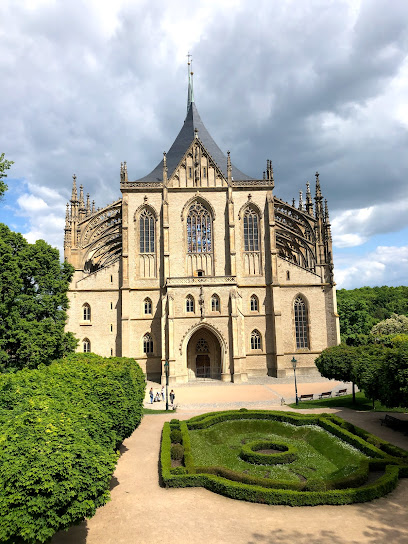
Sedlec Ossuary
Discover the haunting beauty of the Sedlec Ossuary, a unique chapel adorned with the bones of thousands, blending art and history in Kutná Hora.
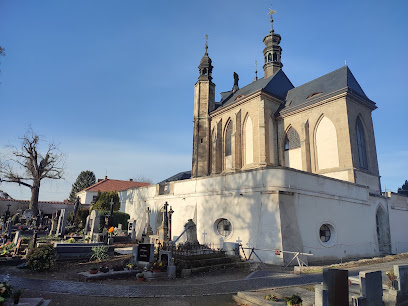
Italian Court
Explore the Italian Court in Kutná Hora, a historical landmark that reveals the fascinating past of the Czech Republic's royal mint and stunning Gothic architecture.
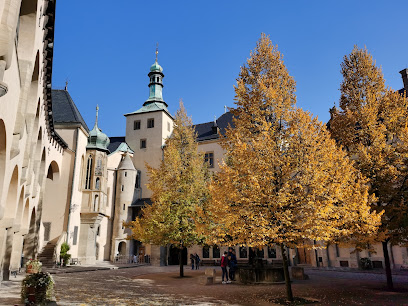
Cathedral of Assumption of Our Lady and St. John the Baptist
Explore the majestic Cathedral of Assumption of Our Lady and St. John the Baptist in Sedlec, a stunning Gothic architectural marvel and spiritual haven.
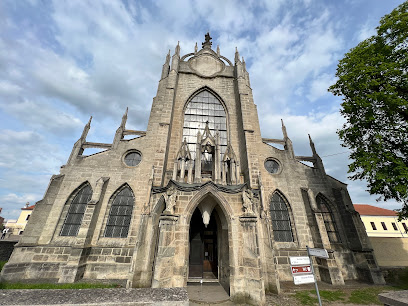
Bobsleigh Kutna Hora
Experience the thrill of summer tobogganing at Bobsleigh Kutna Hora, where speed meets stunning landscapes in an unforgettable adventure.
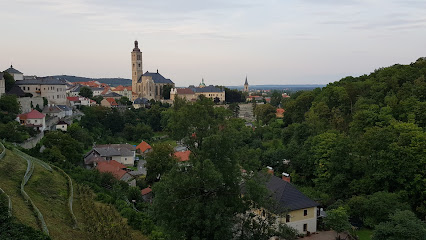
Czech Museum of Silver
Explore the fascinating history of silver mining at the Czech Museum of Silver in Kutná Hora, a UNESCO World Heritage site full of rich cultural heritage.
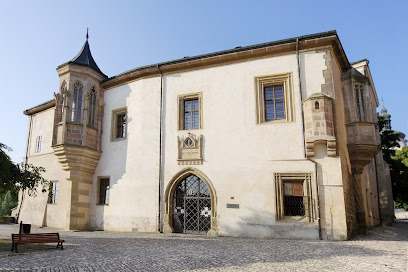
Gothic Stone Fountain
Explore the Gothic Stone Fountain in Kutná Hora, a stunning historical landmark showcasing rich architectural heritage and scenic surroundings.
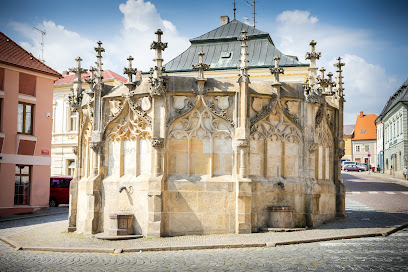
Tower - Havířská Bouda
Experience breathtaking panoramic views and rich history at Havířská Bouda, the ultimate observation deck in Kutná Hora, Czech Republic.
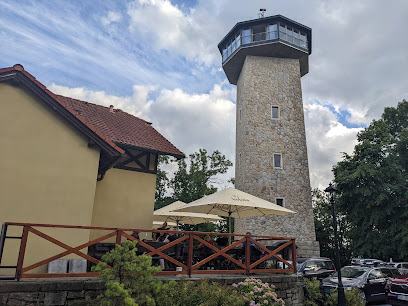
GASK - Central Bohemian Gallery, contributory organization
Discover contemporary art and cultural events at GASK - Central Bohemian Gallery in historic Kutná Hora, a perfect blend of art and history.
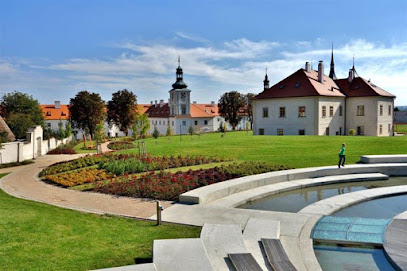
Breuer Gardens
Discover the serene beauty of Breuer Gardens in Kutná Hora, a perfect escape amidst lush greenery and vibrant floral displays.
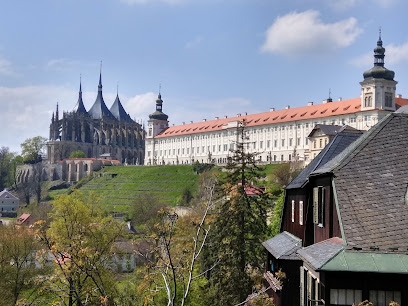
Chocolate Museum & Chocolate
Discover the delicious world of chocolate at Kutná Hora's Chocolate Museum, where history meets culinary delight in an interactive experience.
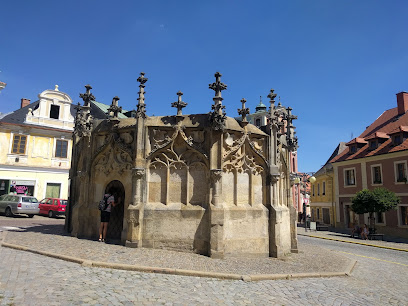
Plague column
Explore the Plague Column in Kutná Hora, a historical landmark that symbolizes resilience and artistry amidst the backdrop of a picturesque town.
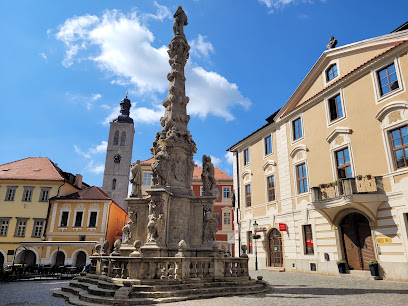
Menhir
Experience the mystery of the Menhir in Kutná Hora, a historic stone monument that connects ancient cultures and modern travelers.
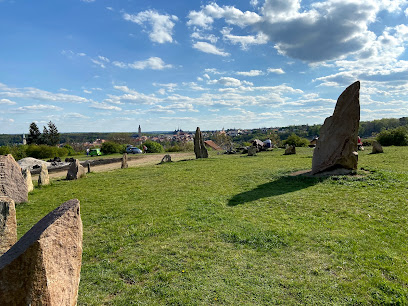
FILM LEGENDS EXPERIENCE MUSEUM Kutná Hora AvP/Sci-fi special
Explore the Film Legends Experience Museum in Kutná Hora, a cinematic journey through iconic sci-fi films and unforgettable characters.
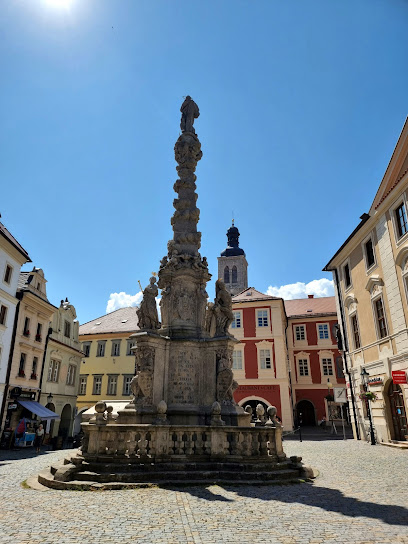
Church of Saint James
Explore the Church of Saint James in Kutná Hora, an architectural wonder and a serene retreat steeped in history and spirituality.
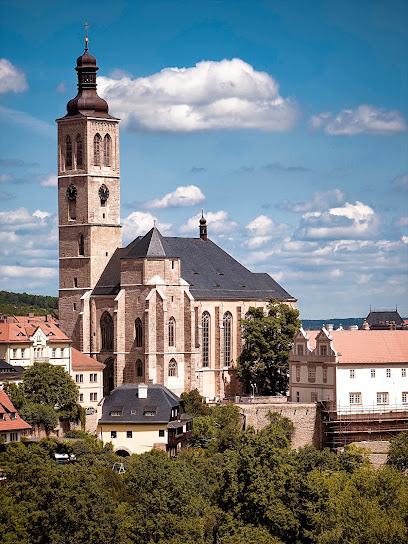
Unmissable attractions to see
St Barbara's Cathedral
Explore the architectural splendor of St. Barbara's Cathedral, a Gothic masterpiece and UNESCO World Heritage site in the enchanting town of Kutná Hora.
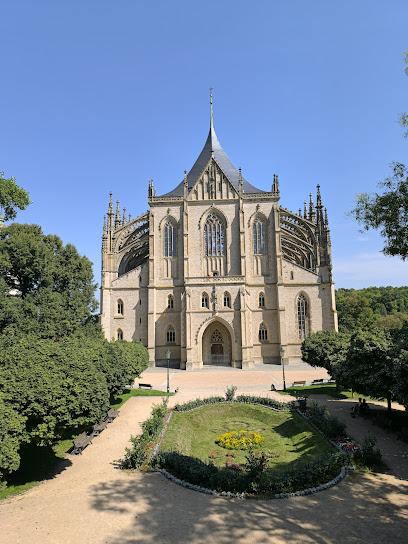
Sedlec Ossuary
Explore the haunting beauty of the Sedlec Ossuary in Kutná Hora, where art and history intertwine through the fascinating use of human bones.

The Konopiste Castle
Explore the historical allure of Konopiste Castle, a magnificent blend of medieval architecture and scenic beauty in the heart of the Czech Republic.
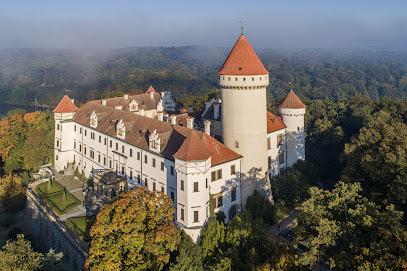
Český Šternberk Castle
Explore the rich history and stunning architecture of Český Šternberk Castle, a must-see historical landmark in the heart of Bohemia.
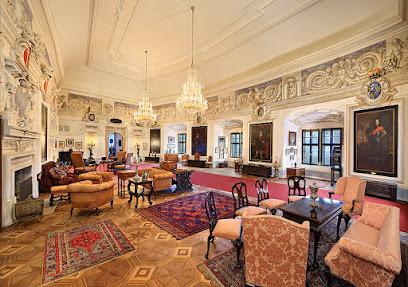
Chateau Žleby
Explore the majestic Chateau Žleby, a captivating manor house surrounded by stunning nature, rich history, and picturesque hiking trails in the Czech Republic.
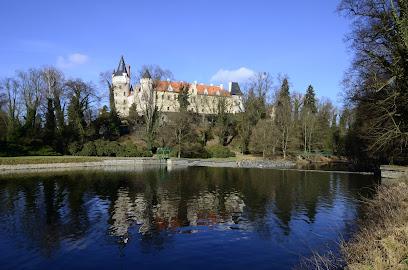
Chateau Žleby
Explore the captivating Château Žleby, a historical manor house surrounded by stunning gardens and scenic hiking trails, perfect for nature lovers and history buffs alike.
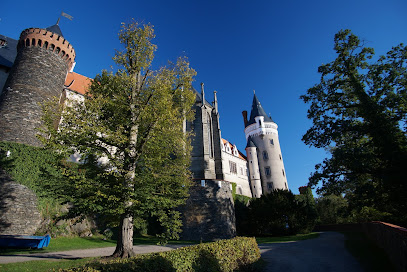
Kačina
Experience the breathtaking beauty and rich history of Kačina, a stunning manor house and museum set in the picturesque Czech countryside.
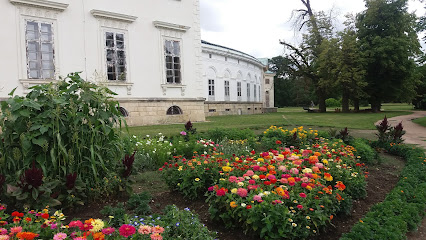
Dětenice Castle
Experience the magic of Dětenice Castle, a medieval-themed destination blending history, dining, and entertainment in a picturesque setting.
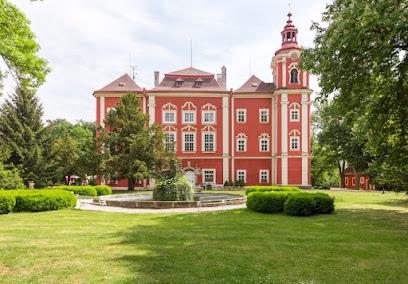
Italian Court
Explore the Italian Court in Kutná Hora – a historical gem that showcases the town's rich heritage and stunning architecture amidst beautiful landscapes.
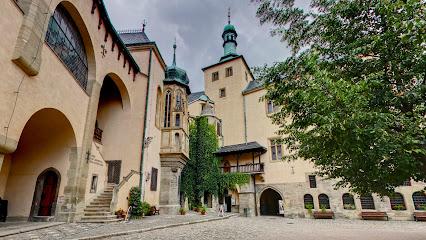
Cathedral of Assumption of Our Lady and St. John the Baptist
Explore the stunning Cathedral of Assumption of Our Lady and St. John the Baptist, a Gothic masterpiece in Sedlec, Kutná Hora, rich in history and architectural beauty.
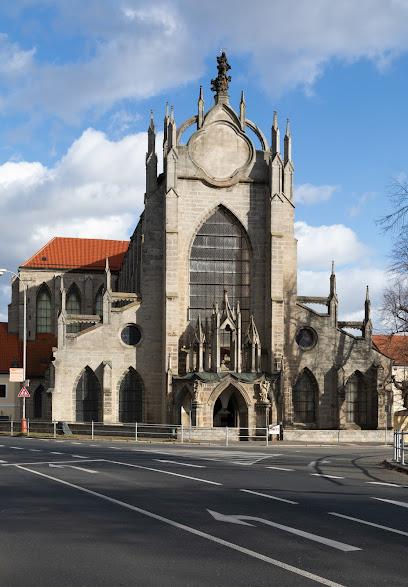
Czech Museum of Silver
Explore the fascinating history of silver mining at the Czech Museum of Silver in Kutná Hora, a UNESCO World Heritage site.
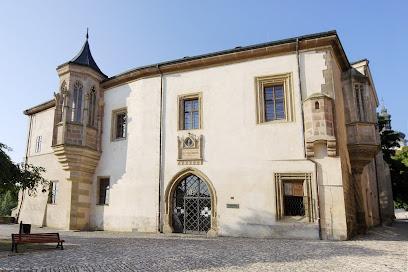
Bobsleigh Kutna Hora
Experience the thrilling summer toboggan run at Bobsleigh Kutná Hora, where adventure meets stunning scenic views in the heart of the Czech Republic.
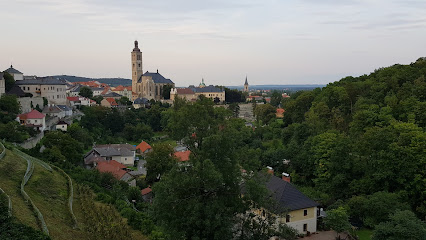
Gothic Stone Fountain
Explore the Gothic Stone Fountain in Kutná Hora, a stunning historical landmark surrounded by lush landscapes and rich in architectural heritage.
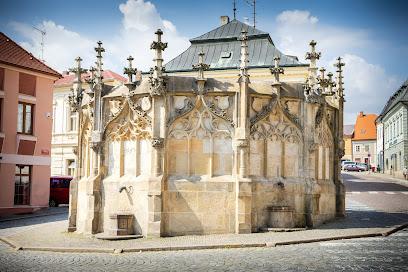
Tower - Havířská Bouda
Discover breathtaking views and serenity at Havířská Bouda Tower, the pinnacle of observation decks in Kutná Hora, Czech Republic.
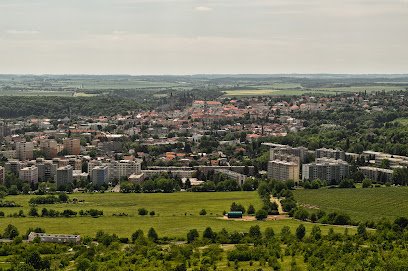
Světlá nad Sázavou Castle
Experience the enchanting Světlá nad Sázavou Castle, a historical manor house blending art, culture, and scenic beauty in the Czech Republic.
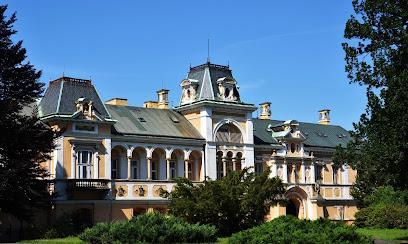
Essential places to dine
Restaurace Dačický
Experience authentic Czech flavors at Restaurace Dačický in Kutná Hora - where tradition meets culinary excellence.
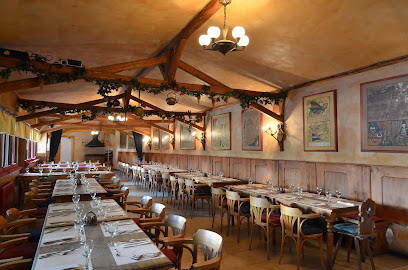
Staročeská restaurace V Ruthardce
Discover the essence of Czech culture at Staročeská restaurace V Ruthardce in Kutná Hora - where traditional cuisine meets warm hospitality.
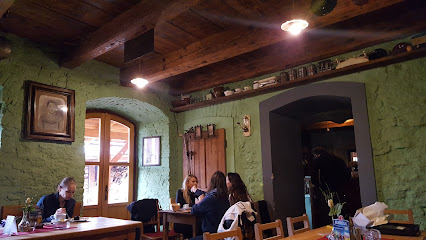
Čtyři sestry - zahradní restaurace
Experience delightful dining amidst nature at Čtyři sestry - a charming garden restaurant in Kutná Hora offering traditional Czech cuisine.
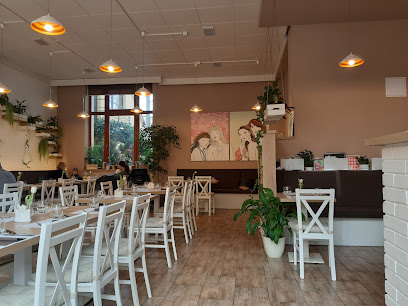
Na Pašince
Experience authentic Czech dining at Na Pašince in Kaňk near Kutná Hora - where tradition meets flavor in a cozy setting.
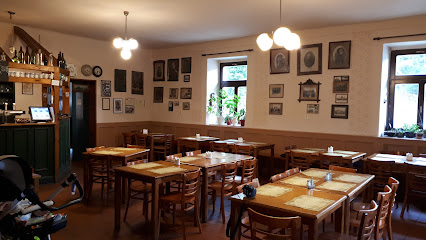
Hostinec U Černého kohouta
Discover authentic Czech cuisine at Hostinec U Černého kohouta in Kutná Hora - where tradition meets taste.
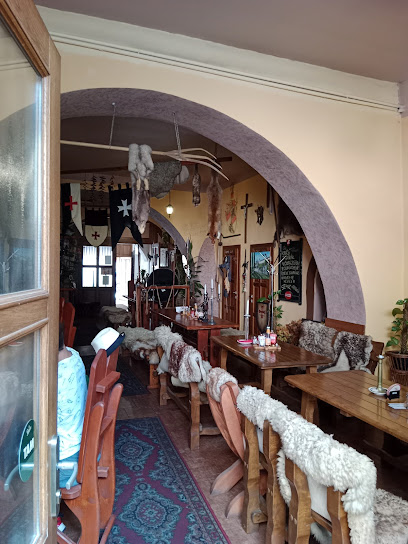
Havířská Bouda
Discover authentic Czech cuisine and cozy lodging at Havířská Bouda in picturesque Kutná Hora.
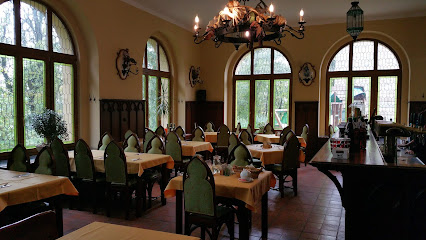
Piazza Navona
Experience authentic Italian cuisine at Piazza Navona in Kutná Hora, where every dish tells a story and every meal is a celebration.
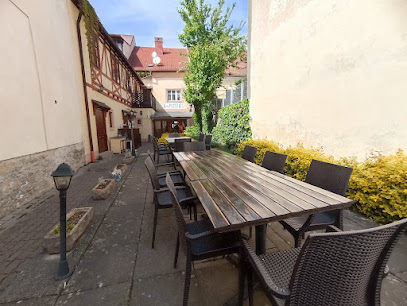
Restaurace U Kata
Experience authentic Czech cuisine at Restaurace U Kata in Kutná Hora – where tradition meets flavor in every dish.
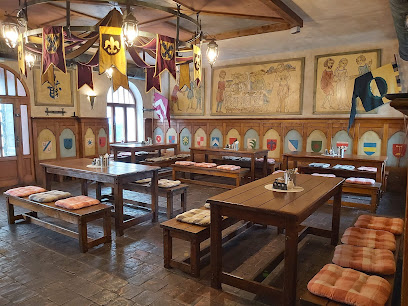
Restaurace M
Discover authentic Czech cuisine at Restaurace M in Kutná Hora, where every meal is a celebration of local flavors and hospitality.
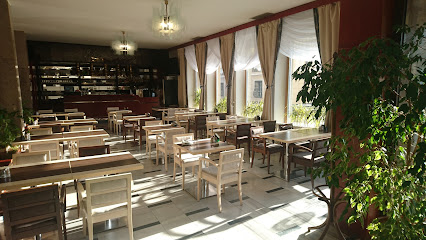
Kozlovna Barborský dvůr
Experience authentic Czech cuisine and local brews at Kozlovna Barborský dvůr in Kutná Hora—a perfect blend of tradition and hospitality.
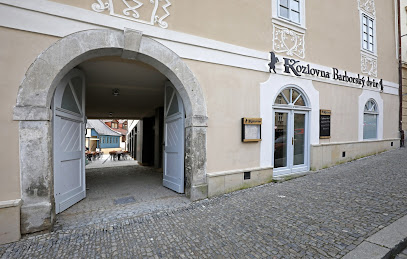
restaurant Vyžlovka
Experience authentic Italian cuisine and succulent steaks at Restaurant Vyžlovka in Kutná Hora – a must-visit culinary destination.
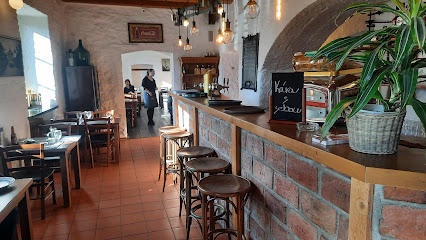
Factory - Bistro Cafe Bar
Experience authentic Czech flavors at Factory - Bistro Cafe Bar in Kutná Hora; where tradition meets modern cuisine in a cozy atmosphere.
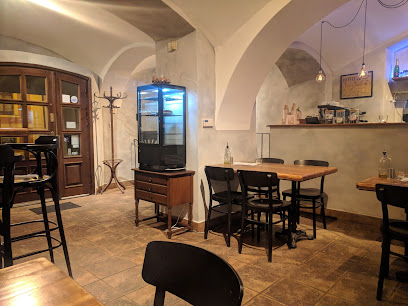
Pizzerie U Šneka Pohodáře
Discover authentic Italian flavors at Pizzerie U Šneka Pohodáře in Kutná Hora – where every pizza tells a story.
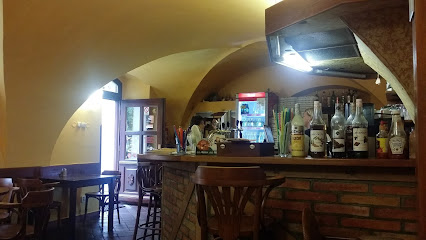
Hostinec U Zlatého Lva
Experience authentic Czech cuisine in the heart of Sedlec at Hostinec U Zlatého Lva – where tradition meets flavor.
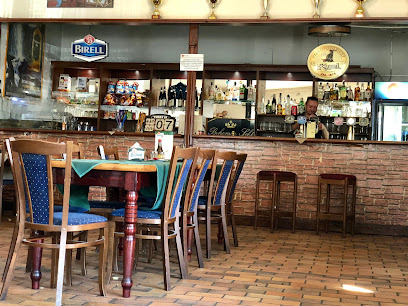
Restaurant - Café HARMONIA, u sv. Jakuba
Discover the flavors of Czech cuisine at Café Harmonia in Kutná Hora - where tradition meets modern dining.
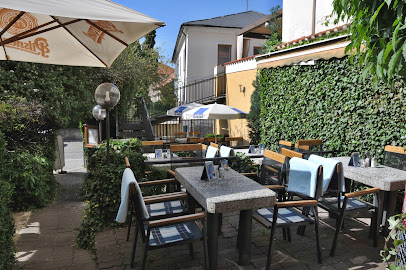
Markets, malls and hidden boutiques
Kaufland
Discover the local flavors and essentials at Kaufland, Kutná Hora's premier supermarket for tourists and locals alike.
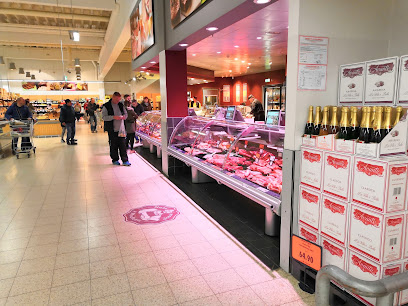
Penny Market
Explore Kutná Hora's Penny Market, your one-stop shop for local delights and everyday essentials at unbeatable prices.
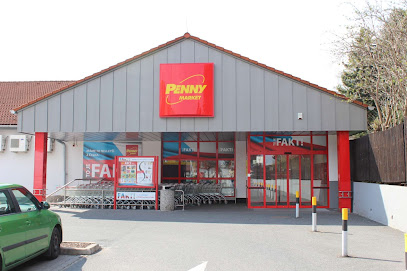
Maxihit
Discover Maxihit, the premier business center and shopping mall in Kutná Hora, where shopping meets convenience in a vibrant atmosphere.
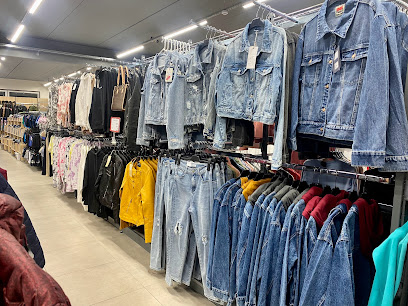
ROSSMANN
Explore ROSSANN in Kutná Hora for top-tier cosmetics and perfumes, the perfect stop for beauty lovers amidst historical wonders.
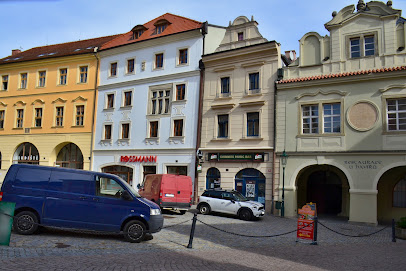
Al Andalous Boutique2
Discover Al Andalous Boutique in Kutná Hora: a culinary delight for coffee lovers and gourmet food enthusiasts.
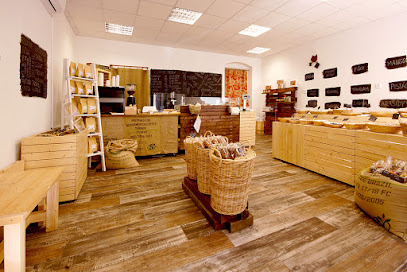
Suvenýry
Explore Suvenýry, your go-to souvenir store in Sedlec, Kutná Hora, for authentic Czech crafts and unforgettable keepsakes.
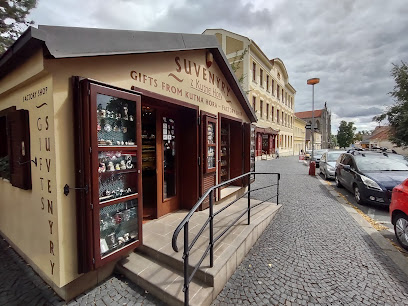
WIKY, spol. s r.o.
Explore the enchanting WIKY Toy Store in Kutná Hora, where imagination meets creativity in a delightful shopping experience for all ages.
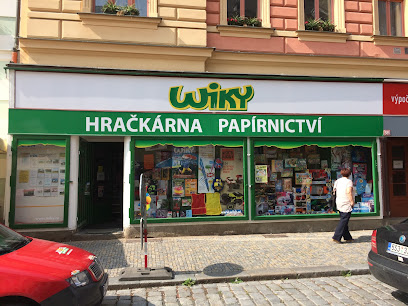
OBCHOD RUSKÝCH POTRAVIN
Discover the rich flavors of Russia at Obchod Ruských Potravin in Kutná Hora, offering authentic culinary delights and unique food products.
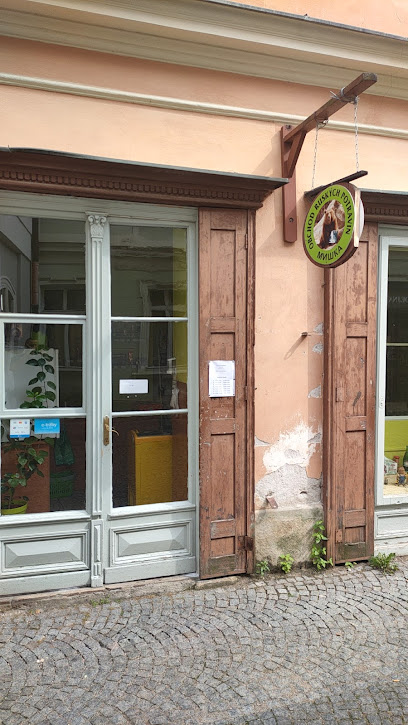
B - Market - Brtnický Stanislav
Explore the charm of B - Market - Brtnický Stanislav in Kutná Hora for a taste of local produce and authentic Czech culture.
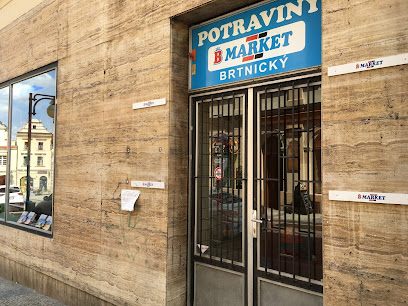
STŘÍBRNICTVÍ - šperky / minerály
Explore STŘÍBRNICTVÍ in Kutná Hora, where exquisite jewelry and unique gifts await every discerning traveler.
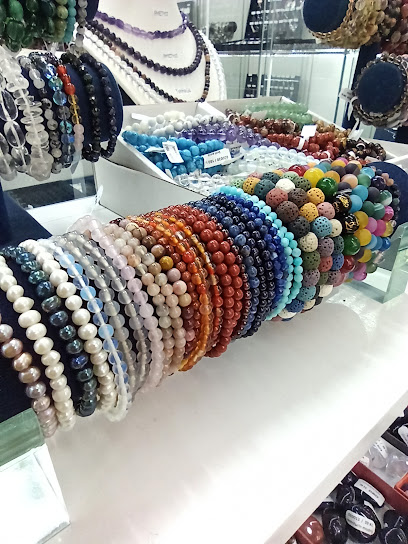
Petr Kašpar
Explore the stylish world of Petr Kašpar in Kutná Hora, where fashion accessories blend elegance with local craftsmanship.
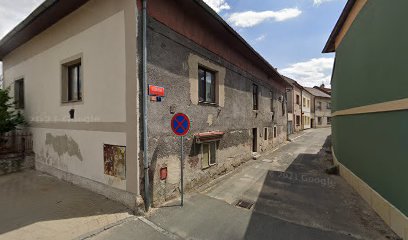
Nejlevnější potraviny Flaška
Explore the best of Kutná Hora with budget-friendly shopping at Nejlevnější potraviny Flaška, your go-to discount supermarket for local essentials.

Men's shop by Hruškovna
Explore unique fashion at Men's Shop by Hruškovna in Kutná Hora, where style meets local charm in a historic setting.
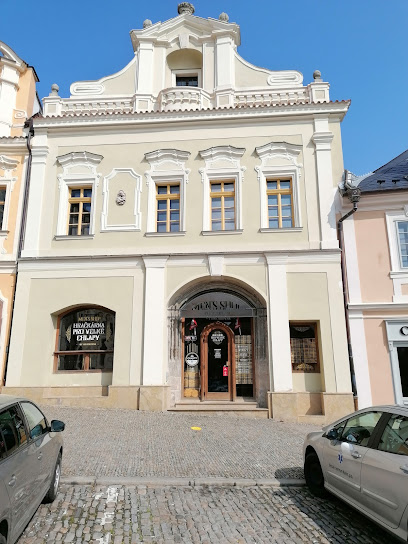
Obchod Koh-i-noor
Explore the unique offerings of Obchod Koh-i-noor, a charming store in Kutná Hora filled with local crafts and delicious delicacies.
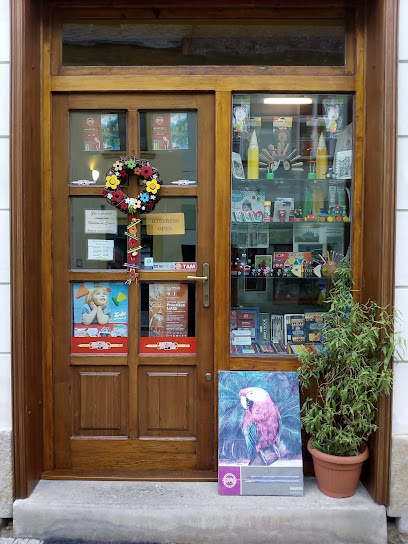
Ludmila Bohouňovská
Discover unique Czech crafts and souvenirs at Ludmila Bohouňovská, a charming gift shop in the heart of Kutná Hora.
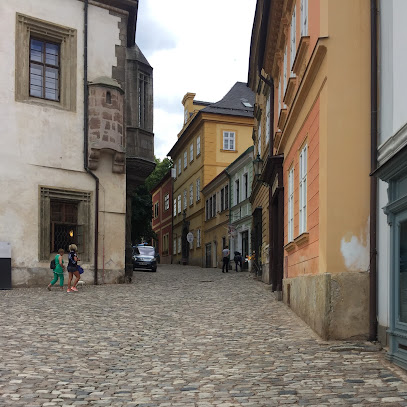
Essential bars & hidden hideouts
Restaurace Dačický
Experience the flavors of traditional Czech cuisine at Restaurace Dačický in the historic town of Kutná Hora.
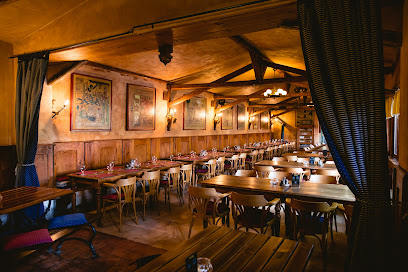
Staročeská restaurace V Ruthardce
Savor the flavors of authentic Czech cuisine in a charming atmosphere at Staročeská restaurace V Ruthardce, Kutná Hora's culinary treasure.
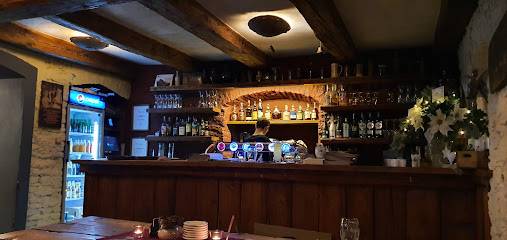
Hostinec U Černého kohouta
Discover the flavors of Czechia at Hostinec U Černého kohouta, a charming restaurant in Kutná Hora serving authentic local cuisine.

Kozlovna Barborský dvůr
Discover the flavors of Czech cuisine at Kozlovna Barborský dvůr, a cozy restaurant and pub in the heart of Kutná Hora.
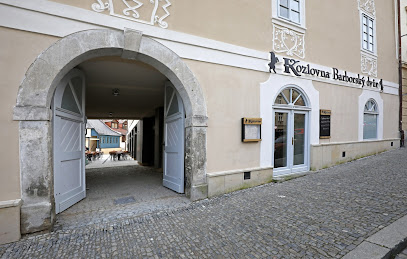
Factory - Bistro Cafe Bar
Experience culinary excellence at Factory - Bistro Cafe Bar in Kutná Hora, where cozy ambiance meets a diverse menu of local and international delights.
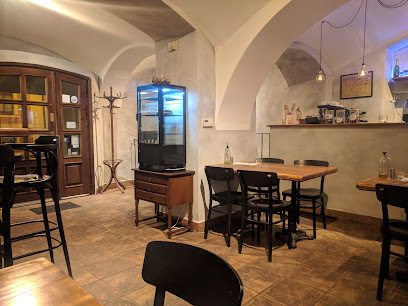
Restaurace a sklepní Bar U Havířů
Discover the essence of Czech cuisine and vibrant nightlife at Restaurace a sklepní Bar U Havířů in Kutná Hora, offering a unique dining experience.
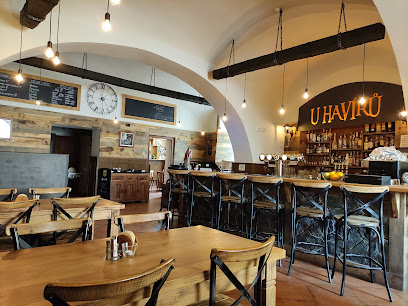
Phở Hà Nội - Rodinné bistro
Discover the flavors of Vietnam at Phở Hà Nội, a charming bistro in Kutná Hora serving authentic phở and delicious Vietnamese dishes.
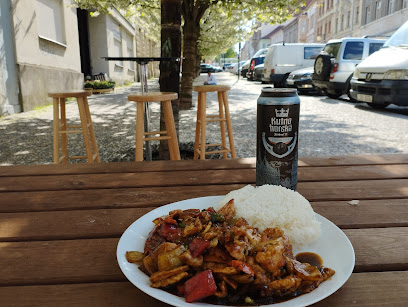
Blues Café
Discover the perfect blend of coffee and music at Blues Café, a cozy haven in Kutná Hora's vibrant cultural scene.
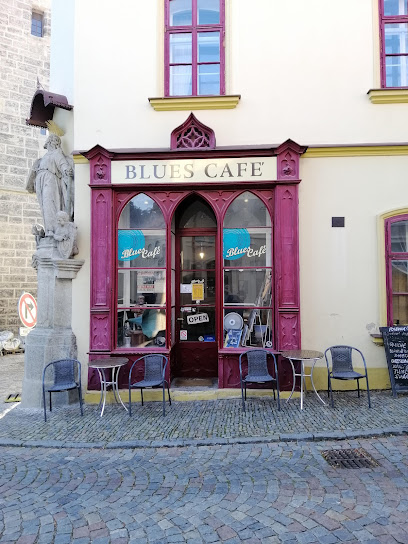
Bar 22
Experience the vibrant nightlife of Kutná Hora at Bar 22, known for its unique cocktails and welcoming atmosphere.
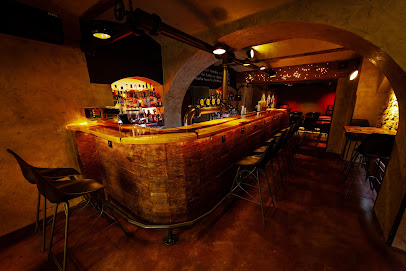
Bistro & Pub Barbora
Discover the authentic flavors of Czech cuisine at Bistro & Pub Barbora, a cozy bistro in Kutná Hora with a welcoming atmosphere.
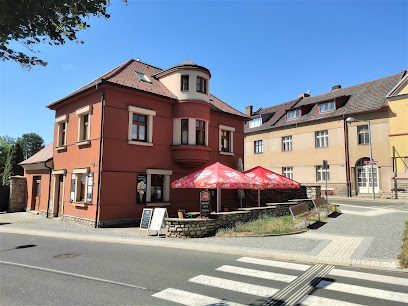
Barborská - cocktail and champagne bar
Experience the vibrant cocktail culture at Barborská, Kutná Hora's premier destination for exquisite drinks and a chic ambiance.
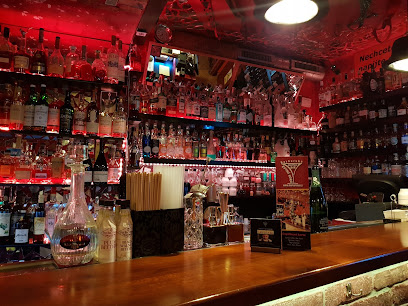
Guinness Music Bar & Grill
Experience the lively ambiance and delicious grilled specialties at Guinness Music Bar & Grill in Kutná Hora, where good food meets great music.
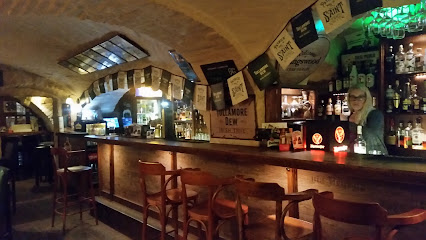
Bar Pod Schodama
Discover the charm of Kutná Hora at Bar Pod Schodama, where local drinks meet a vibrant nightlife in a cozy atmosphere.

Music Club Bar Palma
Discover the excitement of darts and live music at Music Club Bar Palma in Šipší, a hotspot for fun and relaxation.
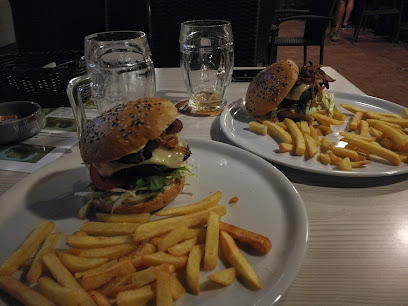
NoName Bar
Experience the vibrant nightlife of Kutná Hora at NoName Bar, where exquisite drinks and an inviting atmosphere await.
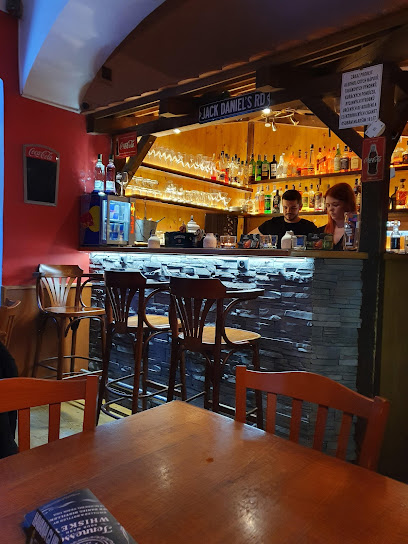
Local Phrases
-
- HelloAhoj
[ahoy] - GoodbyeNa shledanou
[nah shledanou] - YesAno
[ah-noh] - NoNe
[neh] - Please/You're welcomeProsím
[pro-seem] - Thank youDěkuji
[dyeh-koo-yee] - Excuse me/SorryPromiňte
[proh-mee-nye-teh] - How are you?Jak se máš?
[yak seh mahsh] - Fine. And you?Dobře. A ty?
[dobr-zhe. ah tee] - Do you speak English?Mluvíte anglicky?
[mloo-vee-teh ahng-lee-tskee] - I don't understandNerozumím
[neh-roh-zoo-meem]
- HelloAhoj
-
- I'd like to see the menu, pleaseRád bych viděl menu, prosím
[rahd bikh vee-dyel meh-noo pro-seem] - I don't eat meatNejím maso
[neyeem mah-so] - Cheers!Na zdraví!
[nah zdrah-vee] - I would like to pay, pleaseChtěl bych zaplatit, prosím
[khtyel bikh zap-la-teet pro-seem]
- I'd like to see the menu, pleaseRád bych viděl menu, prosím
-
- Help!Pomoc!
[poh-mohts] - Go away!Jdi pryč!
[ydee preets] - Call the Police!Zavolejte policii!
[zah-vo-ley-teh poh-lee-tsee-ee] - Call a doctor!Zavolejte doktora!
[zah-vo-ley-teh dohk-toh-rah] - I'm lostZtratil jsem se
[ztrah-teel yehm seh] - I'm illJsem nemocný
[yehm neh-mohts-nee]
- Help!Pomoc!
-
- I'd like to buy...Chtěl bych koupit...
[khtyel bikh koh-pee-t] - I'm just lookingJen se dívám
[yehn seh dee-vahm] - How much is it?Kolik to stojí?
[koh-leek toh stoh-yee] - That's too expensiveTo je příliš drahé
[toh yeh przh-ee-lish dra-heh] - Can you lower the price?Můžete snížit cenu?
[moo-zheh-te snee-zheet tseh-noo]
- I'd like to buy...Chtěl bych koupit...
-
- What time is it?Kolik je hodin?
[koh-leek yeh hoh-deen] - It's one o'clockJe jedna hodina
[yeh yed-nah hoh-dee-nah] - Half past (10)Půl jedenácté
[pool yed-nyahk-teh] - MorningRáno
[rah-no] - AfternoonOdpoledne
[ohd-po-led-neh] - EveningVečer
[veh-cher] - YesterdayVčera
[v-cheh-rah] - TodayDnes
[dnes] - TomorrowZítra
[zee-tra] - 1Jedna
[yed-nah] - 2Dva
[dvah] - 3Tři
[tree] - 4Čtyři
[chtir-zhee] - 5Pět
[pyet] - 6Šest
[shest] - 7Sedm
[sedm] - 8Osm
[osm] - 9Devět
[deh-vyet] - 10Deset
[deh-set]
- What time is it?Kolik je hodin?
-
- Where's a/the...?Kde je...
[kdeh yeh] - What's the address?Jaká je adresa?
[yah-kah yeh ah-deh-srah] - Can you show me (on the map)?Můžete mi ukázat (na mapě)?
[moo-zheh-teh mee oo-kah-zat nah mah-peh] - When's the next (bus)?Kdy jede další (autobus)?
[kdee yeh-deh dahlshee ow-toh-boos] - A ticket (to ....)Jedno jízdenku (do ....)
[yed-noh yeez-dehn-koo doh]
- Where's a/the...?Kde je...
History of Kutná Hora
-
In the late 13th century, rich silver deposits were discovered in Kutná Hora, transforming the area into one of the most important economic centers in Europe. The silver mines attracted a large influx of miners, merchants, and craftsmen, leading to rapid urban development. The wealth generated from silver mining funded the construction of grand buildings and significantly contributed to the Bohemian Kingdom's economy.
-
The Italian Court (Vlašský dvůr), originally a royal residence and mint, was established in the late 13th century under King Wenceslaus II. It became the central mint of the Kingdom of Bohemia, where silver coins known as 'Prague groschen' were minted. The Italian Court is a key historical site, showcasing the opulence and importance of Kutná Hora during the medieval period.
-
During the early 15th century, Kutná Hora became a focal point in the Hussite Wars, a series of conflicts triggered by religious and political tensions in Bohemia. The town was besieged and captured by Hussite forces in 1420, leading to significant destruction and loss of life. Despite the turmoil, Kutná Hora managed to rebuild and maintain its economic importance.
-
One of Kutná Hora's most iconic landmarks, St. Barbara's Church, began construction in 1388. Named after the patron saint of miners, the church is an exquisite example of Gothic architecture. Its construction spanned several centuries, reflecting the town's fluctuating fortunes. The church's intricate design and stunning stained glass windows make it a testament to the town's rich cultural heritage.
-
Located in the Sedlec district of Kutná Hora, the Sedlec Ossuary, often referred to as the 'Bone Church,' is a unique and macabre site. In the 14th century, the cemetery of the Sedlec Abbey became a sought-after burial site after an abbot sprinkled it with soil from Golgotha. The ossuary, decorated with human bones, was created in the 16th century by a local woodcarver. It serves as a haunting reminder of the Black Death and the Hussite Wars.
-
By the 16th century, the silver deposits in Kutná Hora began to deplete, leading to a gradual economic decline. The town struggled to maintain its former prosperity, and many of its once-bustling mines fell silent. However, the architectural and cultural legacies of its golden age have continued to attract visitors and scholars alike.
-
In 1995, the historical town center of Kutná Hora, along with the Church of St. Barbara and the Cathedral of Our Lady at Sedlec, was designated a UNESCO World Heritage Site. This recognition highlights the town's architectural and historical significance, ensuring the preservation of its rich heritage for future generations.
Kutná Hora Essentials
-
Kutná Hora is located about 70 kilometers east of Prague. The most convenient way to get there is by train from Prague's main train station (Hlavní nádraží). Trains run frequently and the journey takes approximately one hour. Alternatively, you can take a bus from the Florenc bus station in Prague, which also takes about an hour and a half. If you prefer driving, rental cars are available, and the drive is straightforward via the D11 highway.
-
Kutná Hora is a small town with most of its attractions within walking distance. For those who prefer not to walk, local buses and taxis are available. The town also has a small train network, with the main station being Kutná Hora hlavní nádraží. For a unique experience, try the tourist train that runs between major attractions like the Sedlec Ossuary and the historical town center.
-
The official currency of Czechia is the Czech Koruna (CZK). Credit and debit cards are widely accepted in hotels, restaurants, and shops in Kutná Hora. However, it's advisable to carry some cash for smaller establishments and markets. ATMs are readily available throughout the town for your convenience.
-
Kutná Hora is generally a very safe destination. However, like any tourist area, petty crimes such as pickpocketing can occur, especially in crowded places. It's advisable to keep your belongings secure and be aware of your surroundings. There are no specific high-crime areas targeting tourists, but standard precautions should always be taken.
-
In case of an emergency, dial 112, the European emergency number, which will connect you to local emergency services. The local police station and a hospital are available in Kutná Hora for immediate assistance. Pharmacies are also available for minor health issues. It's advisable to have travel insurance that covers medical emergencies.
-
Fashion: Do dress modestly, especially when visiting religious sites such as the Sedlec Ossuary or St. Barbara's Church. Avoid wearing overly revealing clothing. Religion: Do respect local customs and traditions. When visiting churches, be quiet and respectful. Public Transport: Do validate your ticket before boarding the train or bus. Don't eat or drink on public transport. Greetings: Do greet people with a friendly 'Dobrý den' (Good day). A handshake is common when meeting someone for the first time. Eating & Drinking: Do try local delicacies such as 'trdelník' and 'svíčková'. Don't refuse a toast; it's customary to make eye contact when saying 'Na zdraví' (Cheers).
-
To experience Kutná Hora like a local, visit the local markets and bakeries for fresh produce and traditional treats. Engage with locals; they are generally friendly and willing to share stories about the town's rich history. Don't miss the annual Royal Silvering event, where locals dress in medieval costumes and reenact historical scenes. For a quieter experience, take a stroll in the less touristy neighborhoods and enjoy the local cafes and parks.
-
The official language is Czech. While many people in tourist areas speak English, learning a few basic phrases in Czech can be very helpful and is often appreciated by locals.
-
Kutná Hora experiences a temperate climate with four distinct seasons. Summers (June to August) are warm with temperatures ranging from 20-30°C. Winters (December to February) are cold with temperatures often dropping below freezing. Spring and autumn are mild and are ideal for sightseeing.
Trending Landmark in Kutná Hora
-
St Barbara's Cathedral
-
Sedlec Ossuary
-
Italian Court
-
Cathedral of Assumption of Our Lady and St. John the Baptist
-
Bobsleigh Kutna Hora
-
Czech Museum of Silver
-
Gothic Stone Fountain
-
Tower - Havířská Bouda
-
GASK - Central Bohemian Gallery, contributory organization
-
Breuer Gardens
-
Chocolate Museum & Chocolate
-
Plague column
-
Menhir
-
FILM LEGENDS EXPERIENCE MUSEUM Kutná Hora AvP/Sci-fi special
-
Church of Saint James
Nearby Cities to Kutná Hora
-
Things To Do in Hradec Králové
-
Things To Do in Prague
-
Things To Do in České Budějovice
-
Things To Do in Brno
-
Things To Do in Plzeň
-
Things To Do in Český Krumlov
-
Things To Do in Olomouc
-
Things To Do in Dresden
-
Things To Do in Karlovy Vary
-
Things To Do in Wroclaw
-
Things To Do in Linz
-
Things To Do in Opole
-
Things To Do in Vienna
-
Things To Do in Ostrava
-
Things To Do in Trenčín











